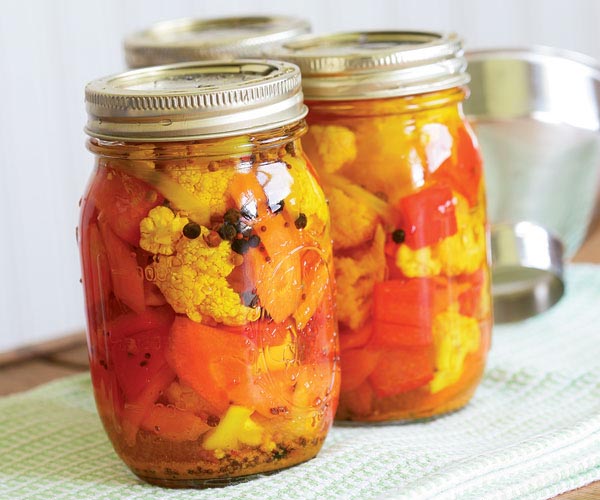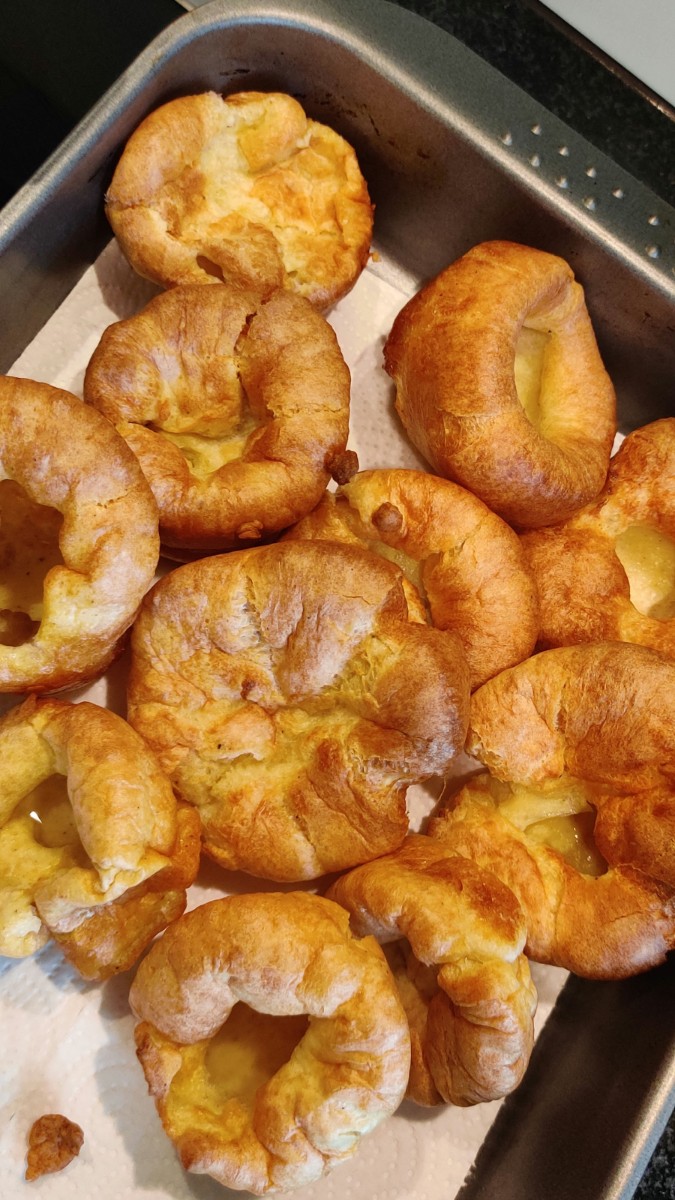Dried Herbs & Spices
Asafoetida (Asafetida) – Asafoetida has a strong odor that mellows out into a garlic-onion flavor.
Allspice – Similar to cloves, but more pungent and deeply flavored. Best used in spice mixes.
Bay Leaf – Adds a woodsy background note to soups and sauces.
Caraway Seed – These anise-tasting seeds are essential for soda bread, sauerkraut, and potato salad.
Cardamom – This warm, aromatic spice is widely used in Indian cuisine. It’s also great in baked goods when used in combination with spices like clove and cinnamon.
Cayenne Pepper – Made from dried and ground red chili peppers. Adds a sweet heat to soups, braises, and spice mixes.
Celery seed – Use celery seed in dishes that benefit from its warm, bitter, celery-like flavor, such as soup stocks, boiling liquid for shellfish, mayonnaise dressings, or meatloaf. Celery seeds should be used whole because of their small size, but also because ground seeds taste far bitterer than whole.
Cinnamon (also: Vietnamese Cassia Cinnamon) – Found in almost every world cuisine, cinnamon serves double duty as spice in both sweet and savory dishes.
Cloves – Sweet and warming spice. Used most often in baking, but also good with braised meat.
Coriander Seed – Earthy, lemony flavor. Used in a lot of Mexican and Indian dishes.
Cumin – Smoky and earthy. Used in a lot of Southwestern U.S. and Mexican cuisine, as well as North African, Middle Eastern, and Indian.
Fennel Seed – Lightly sweet and licorice flavored. It’s excellent with meat dishes, or even chewed on its own as a breath freshener and digestion aid.
Fenugreek – Although this herb smells like maple syrup while cooking, it has a rather bitter, burnt sugar flavor. Found in a lot of Indian and Middle Eastern dishes.
Garlic Powder – Garlic powder is made from dehydrated garlic cloves and can be used to give dishes a sweeter, softer garlic flavor.
Ginger – Ground ginger is made from dehydrated fresh ginger and has a spicy, zesty bite.
Gochugaru – This Korean red pepper spice is hot, sweet, and ever-so-slightly smoky.
Grains of Paradise – These taste like a cross between cardamom, citrus, and black pepper. They add a warming note to many North African dishes.
Kaffir Lime Leaves – Used to flavor curries and many Thai dishes. Can be sold fresh, dry, or frozen.
Loomi – Also called black lime, this is ground from dried limes. Adds a sour kick to many Middle Eastern dishes.
Mace – From the same plant as nutmeg, but tastes more subtle and delicate. Great in savory dishes, especially stews and homemade sausages.
Nutmeg – Sweet and pungent. Great in baked goods, but also adds a warm note to savory dishes.
Oregano – Robust, somewhat lemony flavor. Used in a lot of Mexican and Mediterranean dishes.
Paprika – Adds a sweet note and a red color. Used in stews and spice blends. There is also a spicy version labeled hot paprika.
Peppercorns – Peppercorns come in a variety of colors (black, white, pink, and green being the most popular). These are pungent and pack a mild heat.
Rosemary – Strong and piney. Great with eggs, beans, and potatoes, as well as grilled meats.
Saffron – Saffron has a subtle but distinct floral flavor and aroma, and it also gives foods a bright yellow color.
Sage – Pine-like flavor, with more lemony and eucalyptus notes than rosemary. Found in a lot of northern Italian cooking.
Smoked Paprika – Adds sweet smokiness to dishes, as well as a red color.
Star Anise – Whole star anise can be used to add a sweet licorice flavor to sauces and soups.
Sumac – Zingy and lemony, sumac is a Middle Eastern spice that’s great in marinades and spice rubs.
Turmeric – Sometimes used more for its yellow color than its flavor, turmeric has a mild woodsy flavor. Can be used in place of saffron in a pinch or for those of us on a budget.
Thyme – Adds a pungent, woodsy flavor. Great as an all-purpose seasoning.
Fresh Herbs
Basil (also: Thai Basil) – Highly aromatic with a robust licorice flavor. Excellent in pestos, as a finishing touch on pasta dishes, or stuffed into sandwiches.
Chervil – Delicate anise flavor. Great raw in salads or as a finishing garnish.
Chives – Delicate onion flavor, great as a garnish.
Cilantro – From the coriander plant, cilantro leaves and stems have a pungent, herbaceous flavor. Used in Caribbean, Latin American, and Asian cooking.
Curry Leaves – These pungent leaves are not related to curry powder but impart a similar flavor. Used in Indian, Malaysian, Sri Lankan, Singaporean, and Pakistani cuisine. Used to flavor curries, soups, stews, and chutneys.
Dill – Light and feathery herb with a pungent herb flavor. Use it for pickling, with fish, and over potatoes.
Fenugreek – Although this herb smells like maple syrup while cooking, it has a rather bitter, burnt sugar flavor. Found in a lot of Indian and Middle Eastern dishes.
Lemon Thyme (also: Thyme) – Sweet lemon aroma and a fresh lemony-herbal flavor. This is excellent with poultry and in vinaigrettes.
Lovage – Tastes like a cross between celery and parsley. Great with seafood or to flavor stocks and soups.
Marjoram – Floral and woodsy. Try it in sauces, vinaigrettes, and marinades.
Mint – Surprisingly versatile for such an intensely flavored herb. Try it paired with lamb, peas, potatoes, and of course, with chocolate!
Oregano – Robust, somewhat lemony flavor. Used in a lot of Mexican and Mediterranean dishes.
Parsley – Available in flat-leaf (Italian) or curly varieties, this very popular herb is light and grassy in flavor.
Rosemary – Strong and piney. Great with eggs, beans, and potatoes, as well as grilled meats.
Sage – Pine-like flavor, with more lemony and eucalyptus notes than rosemary. Found in a lot of northern Italian cooking.
Summer Savory – Peppery green flavor similar to thyme. Mostly used in roasted meat dishes and stuffing, but also goes well with beans.
Shiso – A member of the mint family, this herb is used extensively in Japanese, Korean, and Southeast Asian cooking as a wrap for steaming fish and vegetables, in soups, and as a general seasoning.
Tarragon – Strong anise flavor. Can be eaten raw in salads or used to flavor tomato dishes, chicken, seafood, or eggs.
Thai Basil (also: Basil) – A spicy, edgier cousin to sweet Italian basil. A must-have for Thai stir-fries, Vietnamese pho, spring rolls, and other South Asian dishes.
Thyme (also: Lemon Thyme) – Adds a pungent, woodsy flavor. Great as an all-purpose seasoning.
Spice Blends, Rubs & Mixes
Baharat – Black pepper, cumin, cinnamon, and cloves. Used to flavor soups, tomato sauces, lentils, rice pilafs, and couscous, and can be a rub for meats. (Middle Eastern)
Bebere – Hot peppers, black pepper, fenugreek, ginger, cardamom, coriander, cinnamon, and cloves. Other ingredients may include ajwain, cumin, allspice, nutmeg, paprika, onion, or garlic. Used to flavor slow-cooked stews. (African)
Bouquet Garni – Thyme, parsley, and bay leaf. Used to flavor broths and soups. (Classic French)
Chili Powder – Ground chilis, cumin, oregano, cayenne, and lots of optional extras to make this seasoning uniquely yours. Use for chili, stew, beans, grilled meat, and tacos. (Mexican/Southwestern U.S.)
Chinese Five-Spice Powder – Star anise, Szechuan peppercorns, fennel, cassia, and clove. Adds sweetness and depth to savory dishes, especially beef, duck, and pork. (Chinese)
Curry Powder – Typically includes turmeric, coriander, cumin, fenugreek, and red pepper, but mixes can vary. Used primarily to quickly flavor curry sauces. (Indian)
Dukkah – Includes nuts (most often hazelnuts), sesame seeds, coriander, and cumin. Great spice rub for lamb, chicken, and fish. (Egyptian)
Garam Masala – Typically includes cinnamon, cardamom, cloves, cumin, coriander, nutmeg, and pepper. Sweeter than curry powder. Also used to season curry sauces. (Indian)
Herbes de Provence – Usually savory; contains rosemary, marjoram, thyme, and sometimes lavender. Use as a marinade or dry rub for roast chicken, fish, and vegetables. (French)
Old Bay – Celery salt, mustard, red and black pepper, bay leaves, cloves, allspice, ginger, mace, cardamom, cinnamon, and paprika. Created in the Chesapeake Bay area of Maryland, it is traditionally used for shrimp and crab.
Pickling Spice – Most often includes bay leaf, yellow mustard seeds, black peppercorns, allspice, and coriander. Used for pickling vegetables in vinegar.
Pumpkin Pie Spice Mix – Cinnamon, nutmeg, ginger, and cloves. Used for seasoning pumpkin pie, but also great in other spiced baked goods.
Ras al Hanout – Cardamom, clove, cinnamon, paprika, coriander, cumin, mace, nutmeg, peppercorn, and turmeric. Use as a spice rub on meat or as a simple condiment. (North African/Moroccan)
Shichimi Togarashi – Although the ingredients vary, they typically include sansho or Sichuan pepper, dried citrus peel, sesame seeds, poppy seeds, hemp seeds, ginger, garlic, shiso, and nori. Used on noodles and grilled meats. (Japanese)
Za’atar – Thyme, sumac, and sesame seeds. All-purpose seasoning for many Middle Eastern dishes, like grilled meats, grilled vegetables, flatbread, and hummus. (Middle Eastern)


